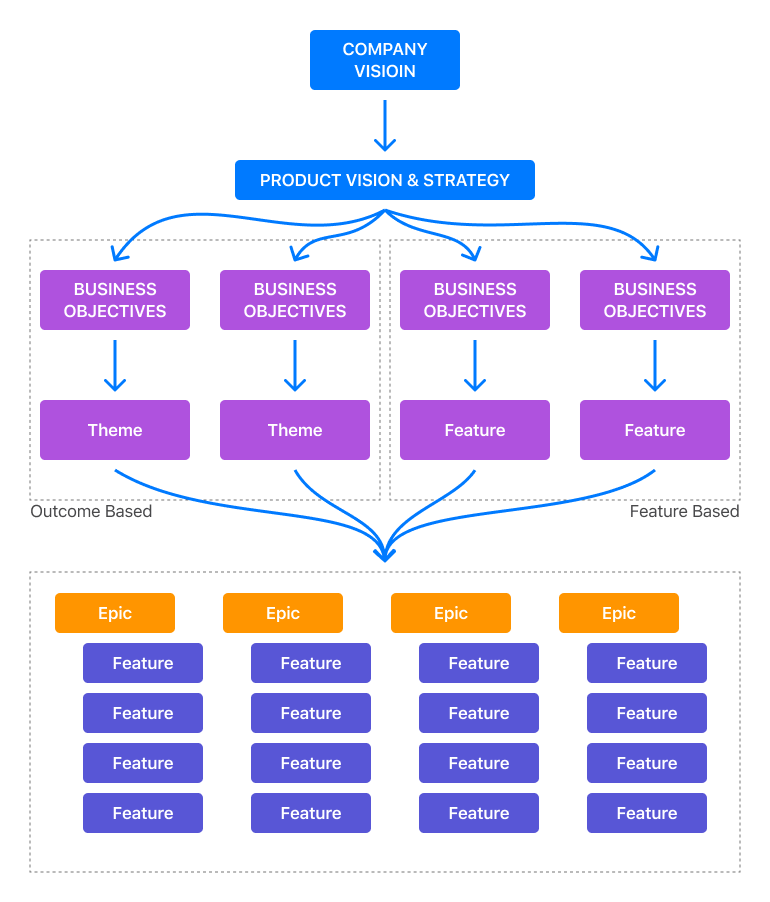Product Roadmaps
Simply put, a product roadmap is a high level plan that organizations use to communicate their plans to achieve their product vision. Product vision is typically driven by the Company’s overall vision.
I wont be surprised if every year around this time I’m talking about roadmaps.
Simply put, a product roadmap is a high level plan that organizations use to communicate their plans to achieve their product vision. Product vision is typically driven by the Company’s overall vision.
There is no right way of building roadmaps. I have seen extremely creative roadmaps using images and colors and also black & white flat lists. You use the best (or right) tool that helps you communicate your roadmap to your audience - not one team, several teams.
The product vision at the very highest level talks about Business Objective - how are we going to make money. There is a common theme to all roadmaps and the business objectives tend to fall under two main formats:
- Outcome Based which is nothing but an overarching theme or an ability
- Feature Based which gets into specifics.
The output for both of these approach is a Product Backlog with Items (PBI) clearly structured and defined.
For example:
Business Objective: Reduce access to item by 30%
Theme: Improve Search Experience
Features: Incorporate Global Searching using keywords

For most part I like taking the outcome based approach as they are better suited for a dynamic market, and themes are less likely to change.
A Feature based approach is well suited for a mature and stable market.
Where things start to break?
The industry today is extremely dynamic and there are 10+ vendors to solve a single problem. The feature based model is fragile and breaks almost instantaneously when their definitions change and new risks or dependencies are uncovered. This tends to erode trust in the product team and its vision.
The best approach is for the management/executives to set the business objectives and empower their product team to determine the themes and features. Delegating builds better leaders.
A good product vision and strategy also tends to fail in the race to meet deadlines. Product teams commonly fail to commit enough time and resources to validate their product strategy.
Basecamp follows a process called Shaping. It’s creative and integrative and a lot of strategic work. Setting the appetite and coming up with a solution requires you to be critical about the problem. What are we trying to solve? Why does it matter? What counts as success? Which customers are affected? What is the cost of doing this instead of something else?
This allows you to define your scope, experience and value you are going to deliver to your customers.
Roadmaps are typically a journey you undertake for the next 4 quarters - its linear. Building that journey digitally is an iterative process. Roadmaps generally do not include outcomes or features to improve your existing features as you have to keep pace with the delivery train.
Review your roadmaps constantly. They are not set in stone and are bound to change. Product Demos, customer feedback, support tickets, KPI’s are a good indicator if you need to take a step back and revisit things.
Wrapping up; empower your product teams to drive the product strategy and roadmap and make them accountable for achieving business objectives.





